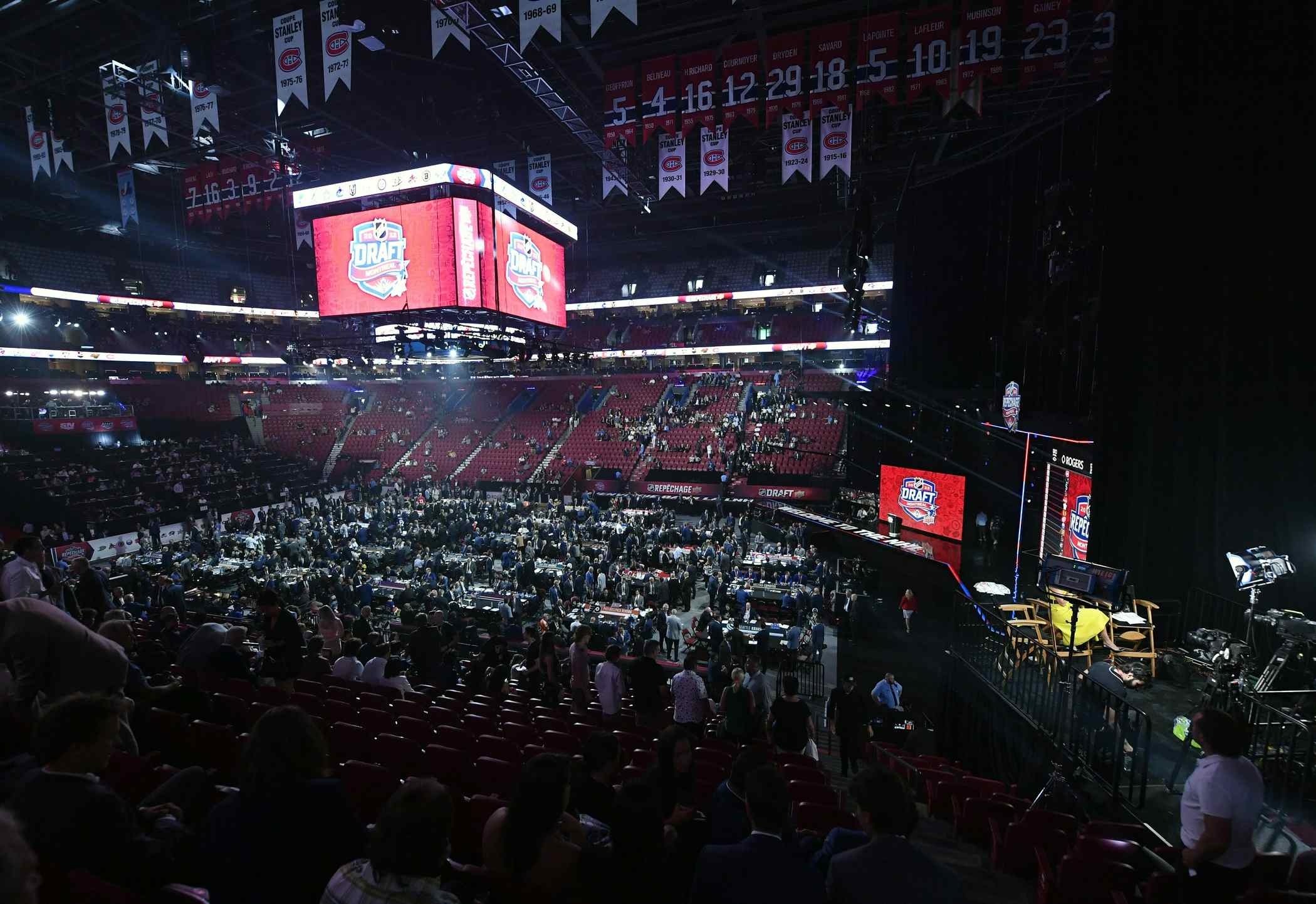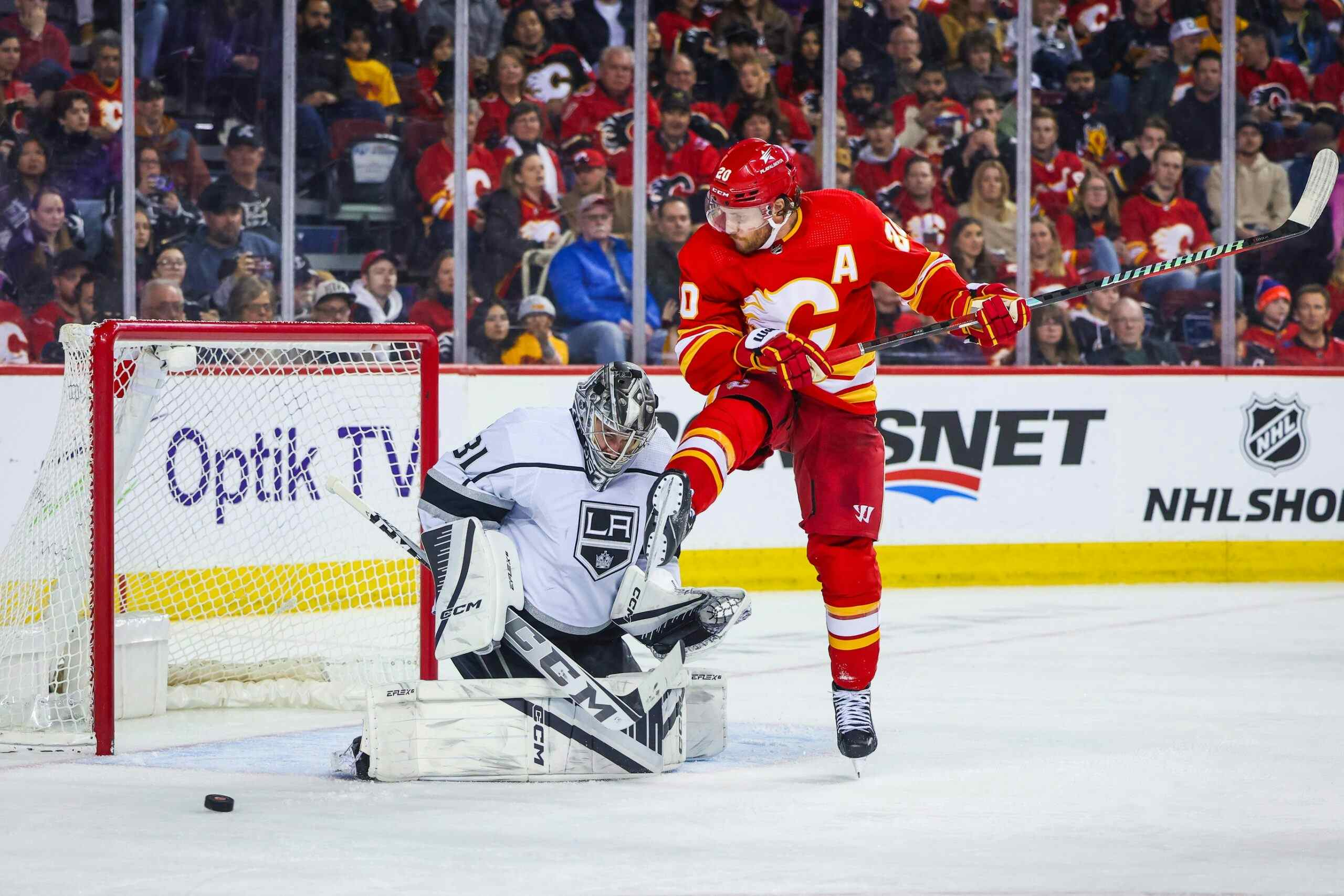5 things: In praise of Brad Treliving’s week
By Ryan Lambert
8 years ago
1. The Hamilton trade and contract
The most reasonable reaction to the Dougie-Hamilton-for-three-draft-picks trade was, “I don’t believe that.”
That was a criminally small price to pay for a guy who everyone — including the team that just jettisoned him — agrees is a young “build your team around this guy” defenseman. That he is now the third such player on the Flames is insane. Calgary went from a top-heavy D corps with a lot of garbage at the bottom to maybe the best in the league, depending upon whether they can re-up David Schlemko (or sign a comparable) to be the No. 5/6 instead of Kris Russell and Deryk Engelland.
Don Sweeney was, we know now, painted into a bit of a corner, but for there to be almost no bidding war was immensely to Brad Treliving’s benefit. In much the same way as the predecessor to his predecessor grossly mishandled the Joe Thornton trade, and his predecessor grossly mishandled the Tyler Seguin trade, Sweeney grossly mishandled the Hamilton trade. The good news for Boston is that he didn’t go to an Eastern Conference team, but that’s about where it ends.
So then Treliving goes out and extends Hamilton for basically his entire prime, at a bargain cost that will help to keep the team flexible for years to come. It’s to the point where it might now be wise to play hardball with Mark Giordano on his extension, because now they’re not dependent on having a player of his caliber around; Hamilton is almost to that level already, and a decade younger. If Giordano wants to be paid $8-9 million per season until he’s 40, trade him and let someone else worry about it. That’s how good the Hamilton deal is.
The impact of this, both on the ice and in the ledgers, is massive. I can’t believe any of it happened.
2. The Frolik deal
Then less than 24 hours after the Hamilton extension is announced, Treliving goes out and knocks down Michael Frolik for five years at $4.3 million per. That might seem like a bit of an overpayment for a guy whose career high in goals was 21, and was set in 2009-10. But we must keep in mind that, when adjusting for inflation of the cap since the lockout-related reset, the would have been paid about $3.85 million (the cap has gone up 11 percent in the last three years). That’s more manageable, for sure.
And it’s exactly the kind of forward the Flames need right now, basically a wing for the newly re-signed Mikael Backlund. Last year, Backlund’s support was a rotating cast of guys who shouldn’t have been in the role they got, but Frolik is perfectly suited for that kind of low-level two-way game that drives possession.
As much as I’d be a little concerned that the Flames offense doesn’t really have anyone to knock your socks off, guys like that weren’t and aren’t going to be available except through trade. And frankly, the Flames don’t have enough in the cupboard to really attract the interest when Phil Kessel types come on the market (not that they’d want Phil Kessel, given the money, but you see the point).
The $4.3 million for Frolik is a good number, and so is the five years. Both make sense, especially because the dollar figure I kept seeing for Frolik was like $5 million, which would have been too rich for any reasonable observer’s tastes.
The Flames don’t really have any top-tier offensive talents (both Monahan and Gaudreau, and maybe Bennett, might turn into that a year or three down the road, but they’re certainly not there yet), and because none were even remotely available, doing a deal like this is the best anyone could have hoped for.
3. Pobody’s nerfect
Of course, even as all that good stuff happened, the one-year, $3.9 million deal to Kari Ramo is baffling.
I just don’t get why a goalie who’s in the low-40s in save percentage overall, and at 5-on-5, is worth $3.9 million. Not that it super matters because they’re not approaching the salary cap anyway, but unless this is done for reasons that are not yet obvious — i.e. they’re planning to trade Jonas Hiller — why not just let him walk and have Joni Ortio be the backup? Doesn’t make a lot of sense.
Ramo isn’t worth that money, full stop.
4. Keeping up with the McDavids
And of course, all this comes at a time when the Flames have to be turning a nervous eye up north.
Edmonton has, likewise, done a lot to improve their situation in as short a time as Calgary has, drafting Connor McDavid, trading for Cam Talbot, signing Andrej Sekera, and making a few other moves that shore up the team’s depth problems in particular.
The Oilers, especially with a new coach who’s proven he can turn a struggling franchise around, look like they could be playoff-competitive next season, and the Flames are probably in that neighborhood as well. A lot of why the Oilers lost a million games again last season was bad luck — the goaltending in particular was unsustainably horrendous — so they should take a big step forward, given what they’ve acquired here. There are still some problem contracts on the roster, but so many strong contributors are signed so affordably (and that obviously includes the McDavid entry-level deal) that you have to think something goes their way here next year.
Which means that, for the first time in years, the Battle of Alberta is going to be watchable and good. That’s very exciting as far as I’m concerned.
5. Staying competitive
One thing I saw a lot of when the
Hamilton trade first went down was people saying, “Well Calgary probably
won’t regress now.” And that’s true in some ways. Having Hamilton — a
bona fide No. 1 defenseman on just about any team in the league — as
your No. 2 or No. 3 (depending on where you want to slot TJ Brodie going
forward) is a lot better than having Dennis Wideman there.
Hamilton trade first went down was people saying, “Well Calgary probably
won’t regress now.” And that’s true in some ways. Having Hamilton — a
bona fide No. 1 defenseman on just about any team in the league — as
your No. 2 or No. 3 (depending on where you want to slot TJ Brodie going
forward) is a lot better than having Dennis Wideman there.
And
with that in mind, plus given Frolik’s two-way capabilities, it’s likely
that the Flames are going to prevent more goals and shots against next
season. But as with, say, Buffalo’s conceptions of being competitive
this season, the distance back to even league-average levels is a long
one. Let’s say these moves buy Calgary back 3.5 percent of possession (a
number which is probably a little high, given that they’ve added two
players so far and the same systems are likely to be in place), that
still only puts them at about 48 percent. That number might be
achievable if you factor in that young players like Hamilton — and also
Gaudreau, Monahan, Bennett, etc. — will probably improve. You can work
with that number, but it’s not ideal. You still need to be pretty lucky
to make the playoffs as a 48 percent possession team.
with that in mind, plus given Frolik’s two-way capabilities, it’s likely
that the Flames are going to prevent more goals and shots against next
season. But as with, say, Buffalo’s conceptions of being competitive
this season, the distance back to even league-average levels is a long
one. Let’s say these moves buy Calgary back 3.5 percent of possession (a
number which is probably a little high, given that they’ve added two
players so far and the same systems are likely to be in place), that
still only puts them at about 48 percent. That number might be
achievable if you factor in that young players like Hamilton — and also
Gaudreau, Monahan, Bennett, etc. — will probably improve. You can work
with that number, but it’s not ideal. You still need to be pretty lucky
to make the playoffs as a 48 percent possession team.
The good news is these acquisitions push players who shouldn’t be in the lineup down a peg, which helps at both ends of the ice. But the Flames allowed the second-most shot attempts
in the league last season (4,183) while taking fifth-fewest (3,346). Of
those, about 47 percent and 51 percent, respectively, ended up on net.
in the league last season (4,183) while taking fifth-fewest (3,346). Of
those, about 47 percent and 51 percent, respectively, ended up on net.
I
would argue that the Flames’ goaltending did about what it should have
last season, on the balance. And everyone understands at this point that the Flames shot far better than their talent level. Assuming the same volume of shot attempts (probably won’t be but stick with me here), let’s say there’s a roughly 300-attempt push away from opponents’ accounts and toward Calgary’s favor. That gets the Flames to the 48 percent I mentioned above.
would argue that the Flames’ goaltending did about what it should have
last season, on the balance. And everyone understands at this point that the Flames shot far better than their talent level. Assuming the same volume of shot attempts (probably won’t be but stick with me here), let’s say there’s a roughly 300-attempt push away from opponents’ accounts and toward Calgary’s favor. That gets the Flames to the 48 percent I mentioned above.
If the Flames get 51 percent of their attempts on goal again next season — that number seems a little high, but okay — that’s about 1,830 shots on goal at 5-on-5. If their on-ice percentages stay the same, which they won’t, Calgary outscores their opponents at evens roughly 163-143. Last season, a plus-20 goal differential at 5-on-5 would have been ninth-best in the league.
But again, we know that the Flames can’t shoot 8.9 percent again next year. No one keeps up those percentages. If the Flames regress to the 7.8 percent their opponents shot last season — about in line with the league average — that leaves them with approximately 143 goals. The same as their opponents. And again, I think those numbers might be a little optimistic.
An even goal differential is better than the negative-2 (and lucky to even be there) posted last year. Do the Flames have enough in the tank on special teams to make up the difference? I’m dubious that the answer is yes, but there’s no question they’ve improved their position significantly.
Recent articles from Ryan Lambert





